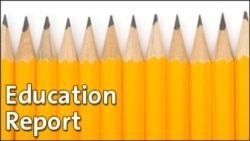Parents in South Australia’s Aboriginal lands may lose some of their financial aid if they do not send their children to school. New rules link school attendance with payments for parents living in poverty.
Warren Mundine is Prime Minister Tony Abbott’s top advisor on issues concerning Aboriginals, native Australians. He disagrees with connecting school attendance and aid. Instead, he urges the government to find ways to improve attendance without punishing parents.
“Now, I know governments find that punitive measures need to happen but I think they’re really a last resort.”
Mr. Mundine says the situation can change if tribal leaders support education.
“We need to work with parents and we need to work with communities because we are making a massive cultural change here.”
But other officials say they believe the threat of stopping aid will force families to take education more seriously.
In South Australia state, only fifty percent of children stay in school after the age of fifteen. In some areas, as much as ninety percent of Aboriginal children struggle to read and write.
The state government says it has special programs for Aboriginal children. It says students work with their parents and teachers to develop a personal learning plan. The plan is re-examined each year. Local officials also say the public schools provide special workers -- called mentors -- who work individually with Aboriginal students who need extra help.
At year seven, Aboriginal students can join a program called Enter for Success. It helps students deal with the change to high school. The program is designed to improve student attendance at school. The students can choose which high school to attend. School officials say students receive support in reaching the goals on their individual learning plans.
The state of Western Australia also has special programs for Aboriginal and other ethnic groups. The state operates a program called Focus Schools. The program centers on basic skills like reading, writing and numbers skills. Sixty-seven of these public Focus Schools serve students in 79 very rural areas. Most are primary schools. Some students on the secondary level study with Internet teaching programs. The state’s minister for education and child development said the Focus Schools program also includes 118 coaches working with students in 134 schools.
About 670,000 indigenous peoples live in Australia.
I’m Katherine Cole.
This story is based on reports from Correspondent Phil Mercer in Sydney, Australia with additional information from South Australia and Western Australia and the Australian Board of Statistics. Jeri Watson wrote this report for Learning English. Caty Weaver was the editor.
_____________________________________________________________
Words in The News
poverty – n. the condition of being poor
native – n. someone who was born in a place, not who moved there
aborigine - n. a member of the original people to live in an area
Aborigine - n. often capitalized, a member of any of the original, native, peoples of Australia
tribe – n. a group of families ruled by a common chief or leader
extra – ad. more than normal, expected or necessary
choose – v. to decide between two or more
Now it’s your turn to use these Words in The News. In the comments section, write a sentence using one of these words and we will provide feedback on your use of vocabulary and grammar.







